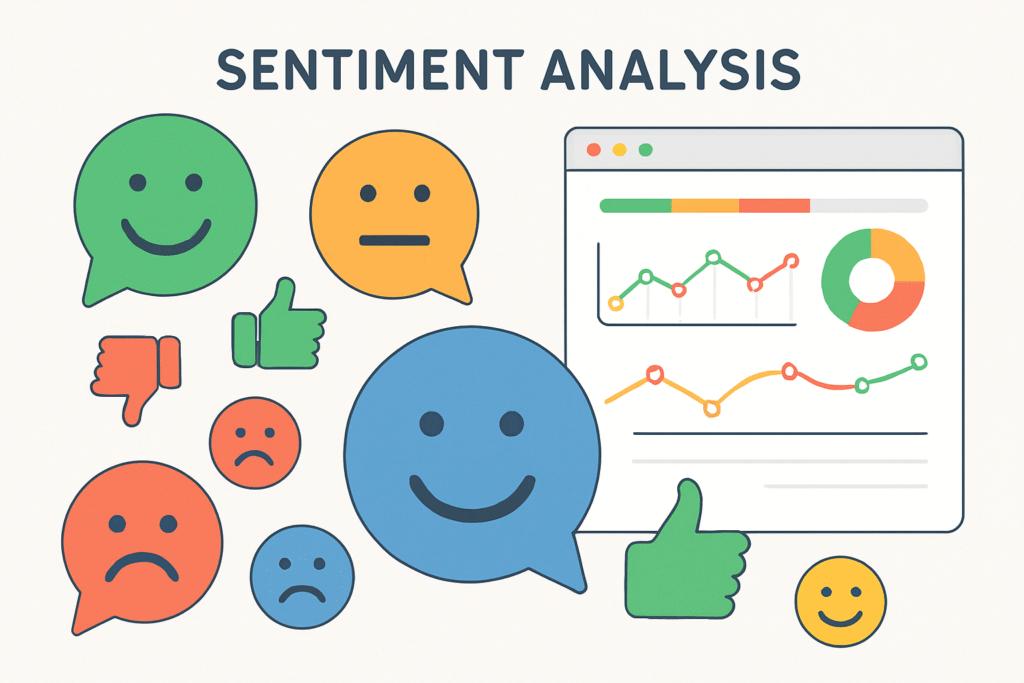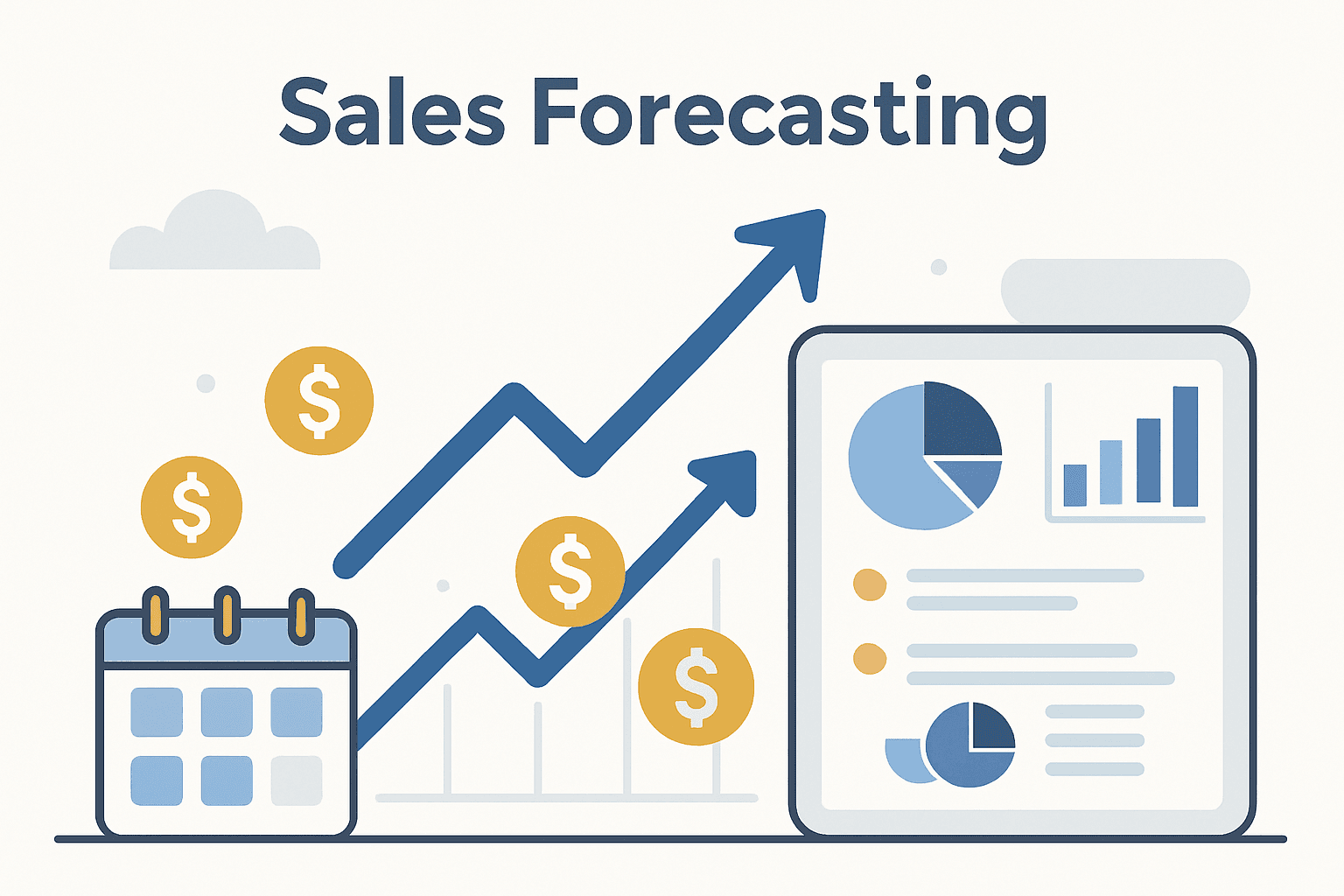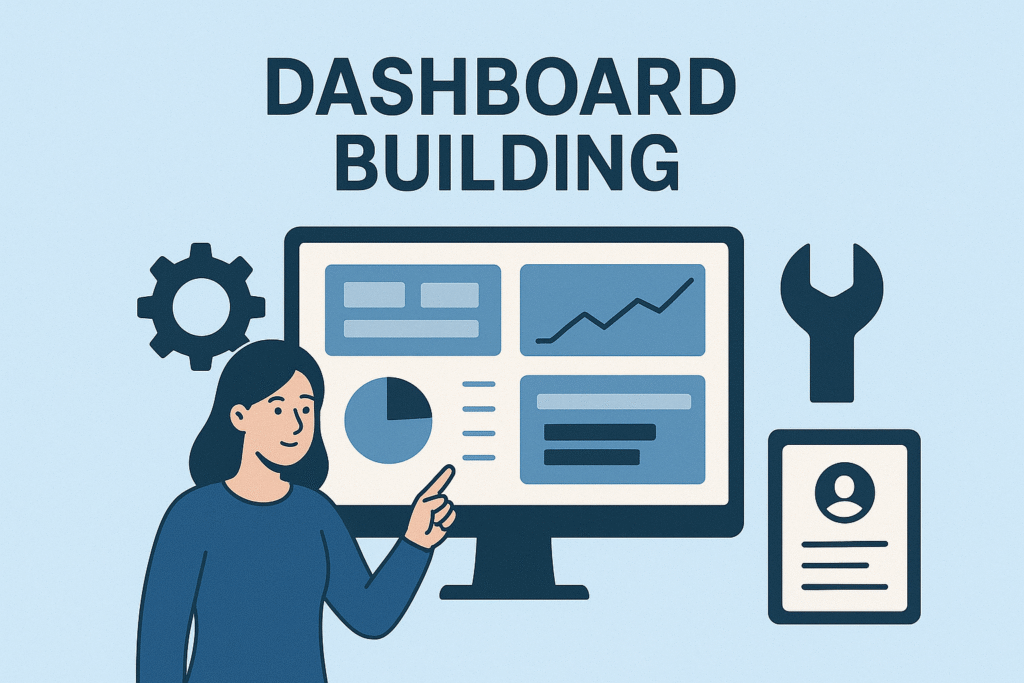According to the U.S. Bureau of Labor Statistics, data science occupations are expected to grow by 34% between 2024 and 2034, making it one of the fastest-growing career categories in 2025.
Given its rapid growth rate, which is significantly higher than the average for all occupations, data science is one of the most promising career choices available to job seekers today.
Entry-level data science specialists are in greater demand than ever before. Over the next ten years, there will likely be 23,400 data scientist positions annually, which will provide plenty of chances for recent graduates and those looking to change careers.
Because of the great importance that businesses place on data-driven insights, entry-level roles now average $85,000 (goes up to $120,000), which is very exciting for newcomers.
From major retailers personalizing customer experiences to healthcare institutions evaluating patient outcomes, businesses from all sectors are rushing to become more data-driven.
There are entry-level chances in almost every industry, not just traditional tech firms, due to the widespread demand for data knowledge.
But it takes more than just technical abilities to succeed in this profitable sector. There is now more competition for entry-level data science positions, and hiring managers are picking candidates more carefully.
It might mean the difference between getting your ideal job and losing out on opportunities if you know exactly what hiring managers are searching for.
The deep secrets of what hiring managers truly look for in 2025 when assessing new data science skills are exposed in this extensive guide.
We will unravel the particular abilities, backgrounds, and characteristics that distinguish applicants in a competitive sector, providing you with the road map to start a prosperous data science career.
The Current Landscape of Entry-Level Data Science Jobs
Today, the data science employment market has reached a significant turning point, with opportunities growing at an unprecedented pace.
Data scientists were among the highest-paid and most in-demand occupations in 2024, according to US News and World Report, making the sector one of the most alluring employment options for recent graduates.
This expansion is changing entire sectors; it is not only theoretical. There is an unquenchable need for data expertise as a result of the proliferation of digital transformation projects and the incorporation of AI and machine learning into corporate operations.
Businesses that once trusted their intuition are increasingly requiring data-driven decision-making at all levels.

Industries Leading the Hiring Charge
Entry-level data scientists are in high demand across several growing industries. The industries with the highest need for recent graduates include healthcare, finance, and e-commerce, which will continue to hire data scientists for positions requiring both technical and commercial knowledge.
For newbies, the healthcare industry appears to be especially attractive. Due to the demand for predictive analytics in patient outcomes and tailored medication, the healthcare industry is anticipated to employ more than 20% of all data science hires this year.
Opportunities for entry-level workers can be found in building AI-powered diagnostic tools, managing hospital operations, and evaluating data from clinical trials.
For hiring data scientists, the finance sector remains a dominant force. Banks, fintech companies, and investment firms are aggressively looking for new talent to develop algorithmic trading models, fraud detection systems, and analytics on client behavior.
Junior data scientists now have specialized responsibilities that focus on compliance and reporting due to the regulatory emphasis on risk management.
Entry-level jobs can also be found in e-commerce and retail technology enterprises.
These businesses frequently favor recruiting recent graduates who can offer novel insights to conventional issues because of the ongoing need to refine recommendation engines, pricing schemes, and supply chain logistics.
Entry-level data science talent is also actively sought after by IT firms in a variety of industries. These organizations are appealing to aspirational newcomers because they usually provide more varied learning opportunities and quicker job advancement.
Read Also: How to Integrate AI into Business Operations: A Simple Guide
Salary Expectations: A Global Perspective
Although the salary for entry-level data scientists varies greatly by region, it is still very attractive globally. The average yearly compensation for an entry-level data scientist in India is ₹8,00,000, although this can vary from 3.8 lakh to 15.9 lakh based on the organization, region, and particular expertise.
For comparison, the average annual pay for an entry-level data scientist in the United States is $117,276. This shows that there is substantial earning potential, which draws talent from all over the world.
Essential Technical Skills Recruiters Expect
Data science’s technical landscape is evolving quickly, and in 2025, recruiters’ expectations have become more focused on a small number of essential skills.
Recognizing these key competencies can mean the difference between your CV being rejected by applicant tracking systems and receiving a callback for an interview.
Read Also: A Day in the Life of a Data Scientist: What to Expect?
Programming Languages: The Foundation Trio
Python is the most important programming language for beginning data scientists, followed by SQL and R. This hierarchy takes into account the realistic requirements of contemporary corporate processes and data science activities.

Python has solidified its status as the unchallenged leader in data science programming. Recruiters look for applicants who understand object-oriented programming concepts, debugging methods, and Python syntax.
The flexibility of the language enables experts to manage tasks ranging from data cleansing to the implementation of machine learning models.
The ability to use SQL has become more and more important in recent years. The importance of SQL has increased significantly in recent years, and many employers now give preference to applicants who can effectively query databases and work with enormous datasets.
Professionals at the entry level should be at ease writing sophisticated window functions, stored procedures, subqueries, and joins.
Particularly for businesses with significant requirements for statistical analysis or academic research backgrounds, R is still useful.
Although not as widely needed as Python and SQL, knowing R can set individuals apart, particularly when seeking jobs in research, finance, or pharmaceuticals.
Data Analysis & Visualization: Making Data Speak
Entry-level applicants are expected by modern recruiters to show mastery of important data processing and visualization tools.
The Python ecosystem is in charge of this area, and Pandas provides the foundation for activities involving data manipulation. DataFrame operations, data cleaning methods, and addressing missing values should all be familiar to candidates.
The majority of Python-based data science procedures rely on NumPy; therefore, understanding it is similarly crucial.
Gaining an understanding of broadcasting ideas, mathematical operations, and array manipulations shows a strong foundation in numerical computing.
Matplotlib is still the standard plotting package for visualization, but employers are beginning to look more favorably at applicants who can tell gripping visual narratives.
Having an understanding of Plotly for interactive dashboards and Seaborn for statistical visualizations might help candidates stand out from the crowd.
Business intelligence technologies, like Tableau and Power BI, are now considered necessities rather than desirable abilities. As a whole, they look for Python, R, SQL, analytics, machine learning, cloud platforms, and visualization.
Businesses seek data scientists who can successfully convey findings to stakeholders who are not technical by using expert dashboards and reports, in addition to conducting data analysis.
Machine Learning Basics: The Core Algorithms
Entry-level data scientists need to show that they grasp the basic ideas of machine learning and how they are used in real-world scenarios.
Recruiters are always looking for people who know the fundamentals of reinforcement learning, unsupervised learning (clustering), and supervised learning (regression and classification).
Regression methods are the cornerstone of predictive modeling and include logistic regression, polynomial regression, and linear regression.
Candidates ought to be aware of when to use each method, how to read coefficients, and how to assess model performance with metrics such as AUC-ROC, RMSE, and R-squared.
Support vector machines, random forests, and decision trees are examples of classification techniques that are equally significant. Comprehending cross-validation methods, overfitting prevention, and the bias-variance tradeoff shows advanced model development thinking.
For problems involving unsupervised learning, clustering techniques like K-means, hierarchical clustering, and DBSCAN are crucial. People who can explain why clustering is appropriate and how to assess the quality of clustering are highly valued by recruiters.
Your skill portfolio should include languages like Python, R, or Java as well as technologies like Scikit-learn or Keras.
Knowing how to use Scikit-learn is especially important because it offers a standardized API for putting the majority of machine learning algorithms into practice.
Candidates should feel at ease choosing models, creating pipelines, and adjusting hyperparameters.
Read Also: What Is The Machine Learning Specialization By DeepLearning AI On Coursera?
Statistics & Mathematics: The Theoretical Foundation
For data science professionals to be successful in entry-level roles, they must possess a solid grasp of multiple probability and statistical principles.
Technical interviews are used by recruiters to assess candidates’ theoretical understanding and practical application abilities.
In data science, probability theory serves as the foundation for decision-making. The application of Bayes’ theorem, conditional probability, and probability distributions to actual data problems should be understood by candidates.
Deciding which analytical techniques to use is aided by knowing when data follows normal, binomial, or Poisson distributions.
The ability to test hypotheses is essential for deriving reliable conclusions from data. T-tests, chi-square tests, ANOVA, and an awareness of p-values, confidence intervals, and statistical significance should all be familiar to young employees.
The ability to properly conduct experiments and evaluate the results sets strong candidates apart from those who are only proficient with code.
Knowledge of linear algebra, though sometimes disregarded, is becoming more and more crucial as machine learning advances.
Candidates might better understand algorithms’ internal workings by comprehending vectors, matrices, eigenvalues, and eigenvectors rather than viewing them as mysterious black boxes.
Read Also: Is The Advanced Statistics For Data Science Specialization On Coursera Worth It?
Big Data & Cloud Awareness: The Modern Infrastructure
Although it’s not necessarily required for entry-level roles, having knowledge of cloud platforms and big data technologies greatly increases a candidate’s marketability.
As businesses transition to scalable solutions for their data infrastructure, cloud platforms are frequently mentioned in job requirements.
Possessing expertise with Apache Spark offers opportunities in positions involving massive data processing.
Comprehending Spark’s distributed computing principles, DataFrame API, and Python integration (PySpark) indicates preparedness for data difficulties at the enterprise level.
Knowledge of cloud platforms, especially AWS, Google Cloud Platform, or Microsoft Azure, demonstrates an awareness of contemporary data infrastructure.
Candidates at the entry level should feel at ease with virtual machines, storage buckets, and managed database services.
Candidates applying to tech-forward firms may stand out due to their excellent knowledge of orchestration using Kubernetes and containerization using Docker. These abilities indicate a comprehension of scalability issues and contemporary software deployment procedures.
Demonstrating basic knowledge in these areas, as opposed to expert-level proficiency, is crucial for entry-level candidates. Recruiters choose those who can pick up specific implementations on the job and who comprehend the concepts.
Read Also: Building A Career in AI: Skills and Certifications Needed
Non-Technical Skills That Make You Stand Out

Long-term professional success in data science is determined by non-technical skills, even as technical expertise opens opportunities.
Employers across all industries regularly rank emotional intelligence, critical thinking, and problem-solving skills at the top of their priority lists, indicating a significant change in the way recruiters assess applicants in 2025.
Professionals who can connect intricate scientific ideas with practical commercial applications are in high demand in the current data science environment.
As opposed to those with a small number of highly specialized talents, such as coding, those with a wide range of basic skills acquired new things more quickly, made more money, advanced into more senior roles, and demonstrated greater resilience to changes in the market throughout the course of their careers.
This study emphasizes why hiring managers are giving more weight to applicants who are well-rounded rather than just technical experts.
Read Also: 8 Soft Skills Every Data Scientist Needs to Succeed
Problem-Solving Mindset: The Analytical Detective
They look for a full bundle of capabilities in Python, R, SQL, machine learning, analytics, cloud platforms, visualization, ETL, problem-solving, and communication, with problem-solving serving as the thread that connects technical abilities in a significant way.
Applying algorithms to datasets is only one aspect of a true problem-solving approach.
It is about asking appropriate questions prior to beginning analysis, comprehending the business context of data requests, and using structured thinking to tackle problems.
Candidates who can deconstruct difficult business issues into digestible analytical parts are sought after by recruiters.
During technical interviews, entry-level applicants can show that they can solve problems by delineating their thought process. Successful candidates do not leap to technological answers every time they are given a case study.
Rather, they elucidate presumptions, spot possible problems with data quality, take into account different strategies, and process the commercial ramifications of their conclusions.
Persistence and intellectual curiosity are other traits of the finest problem solvers.
They examine more closely to comprehend abnormalities, validate findings using a variety of methodologies, and take into account edge circumstances that could influence their conclusions, rather than taking initial results at face value.
Raw technical talents are transformed into insightful commercial knowledge by this detective-like mindset.
Communication Skills: Translating Data into Stories
The most common request on job postings was for communication skills, underscoring the vital role that these abilities play in data science positions.
Critical thinking, problem-solving, empathy, teamwork, and communication are all examples of soft skills for data scientists. Communication is the cornerstone that makes the other soft skills work.
Communication about data science works on several levels. When explaining things, you must be able to put yourself in their position and consider their interests and history.
This entails changing the way you communicate depending on whether you’re addressing corporate leaders, other data scientists, or the people who will be using your models.
The use of visual storytelling in data science communication has become crucial. You must become an expert in data visualization concepts and presentation techniques if you want to deliver intricate analysis to others quickly and without hurry.
Effective applicants are able to turn statistical results into gripping stories that influence corporate choices.
Communication abilities in writing are equally crucial. Data scientists need to write executive summaries that emphasize important findings, properly define their technique, and publish technical documentation that makes it possible for others to replicate and expand on their work.
In order to demonstrate the deep listening skills necessary for effective communication, it entails delving deeply to define the extent and scope of the problem at hand, as well as its origins and repercussions, potential courses of action, and potential results.
Collaboration and Teamwork: The Cross-Functional Navigator
The collaborative nature of modern data science necessitates a smooth integration with business stakeholders, engineers, marketers, and product managers.
For entry-level roles, the capacity to collaborate well with cross-functional teams has become a must.

Understanding how various departments function and the measures that propel their performance is essential for effective collaboration in data science.
While someone assisting operations needs to understand supply chain efficiency measures and quality control procedures, a data scientist working with the marketing team needs to understand client acquisition costs and lifetime value.
Making difficult ideas understandable to non-technical stakeholders is the building block of effective communication.
This entails working together to develop data gathering techniques that strike a compromise between operational viability and statistical rigor, converting statistical confidence intervals into business risk assessments, and elucidating model constraints in terms of possible business impact.
Data scientists who are most useful act as liaisons between business and technical teams.
In addition to actively participating in product planning meetings, they also help non-technical colleagues comprehend the potential and constraints of data-driven techniques and contribute to strategic conversations around data infrastructure.
Adaptability & Continuous Learning: The Evolution Imperative
The fundamental soft skills that recruiters look for include communication, leadership, flexibility, problem-solving, and business savvy. Adaptability is especially important in the quickly changing data science field.
Data science is evolving at a rate never seen before. Data utilization is impacted by privacy laws, company requirements change in response to market conditions, and new machine learning frameworks are frequently developed.
Maintaining current knowledge of the newest tools and technology is now essential for a successful career and is no longer a choice.
Data science involves continuous learning that goes beyond technical proficiency.
Industry developments, legislative modifications, and new commercial uses for data science are all topics that successful professionals keep up to date on.
They experiment with new methods, actively seek feedback on their work, and maintain an interest in related subjects that could influence their analytical style.
Flexibility in methods is another way that adaptability shows up. The kind of pragmatic insight that recruiters appreciate is exhibited by entry-level applicants who are able to switch between several analytical methodologies according to data availability, time constraints, and company requirements.
This involves being able to distinguish between simple statistical techniques and intricate machine learning algorithms, as well as between model correctness and interpretability.
The most flexible applicants see change as a chance rather than a challenge. They show a willingness to go beyond their comfort zones, volunteer for difficult assignments, and embrace new tools.
Recruiters can tell a candidate with this growth mentality will continue to be useful as the profession continues to change quickly.
To succeed in data science and to be productive in general, you must effectively communicate your difficulties, ideas, thoughts, results, and conclusions.
When these non-technical talents are combined, technical capabilities are multiplied, allowing entry-level data scientists to produce business value right away rather than merely technical outputs.
Read Also: How to Transition into a Data Science Career from a non-tech background: Tips for Professionals
Educational Background Recruiters Prefer
Data science education has undergone significant change, opening up a variety of career paths. Being aware of the differences between the “preferred” and real qualities listed by recruiters can mean the difference between getting an interview and being ignored.
Traditional Degrees: Still the Gold Standard
Bachelor’s degrees are still the most sought-after educational need for data engineers, appearing in 42% of job advertisements.
Additionally, master’s degrees are in high demand, showing up in 28% of ads. This statistical fact illustrates how many recruiters still favor candidates with formal schooling.

Degrees in computer science and information technology offer the best starting point for entry-level positions in data science.
These courses usually address topics that are crucial to data science work, such as algorithms, data structures, software development techniques, and system design principles.
A strong technical basis is produced by the rigorous programming and theoretical computer science expertise, which many recruiters find comforting.
Degrees in statistics and mathematics provide yet another well-regarded route. Deep statistical reasoning abilities, an understanding of probability theory, and proficiency in mathematical modeling are all derived from these backgrounds and are immediately applicable to data science applications.
Candidates with quantitative degrees are frequently preferred by recruiters for positions involving intricate statistical analysis or research-focused tasks.
The market for data science is seeing an increase in the value of engineering degrees, especially those from B.Tech. and M.Tech. Programs.
The technical project knowledge, analytical thinking, and problem-solving approach from engineering school fit very nicely with data science requirements.
By combining their mathematical training with domain-specific technical skills, many engineering graduates make a smooth transition to data science.
Bootcamps & Online Certifications: The Practical Alternative
Fast Track to Job Readiness: Bootcamps help you become a candidate who is ready for the workforce more quickly than a college degree because they only concentrate on practical, job-relevant abilities.
With this simplified method, you can begin working in data science within a few months. Forward-thinking recruiters have taken notice of bootcamp learning’s effectiveness.
Although it can be useful, a conventional four-year degree in data science or a similar discipline is not required to work as a data scientist.
Bootcamps and other intense programs have helped many great data scientists acquire the requisite knowledge and abilities. This development signifies a major shift in the way the industry assesses applicants.
Reputable websites like Coursera, Udemy, and DataCamp have created extensive courses that are now accepted by many employers as suitable training for positions in data science.
These programs frequently cover the newest tools, frameworks, and industry best practices, offering more up-to-date content than typical academic programs.
They are typically less expensive and more career-focused and skill-based than traditional bachelor’s or master’s degrees.
Because of their practical focus, bootcamp graduates are appealing to employers looking for personnel who can make a quick contribution.
However, many data science bootcamps require students to have a STEM degree and have stringent admissions procedures.
This criterion reflects the fact that effective data science work necessitates solid quantitative foundations, which some programs presume rather than provide.
Tech-savvy recruiters now view Kaggle certificates and micro-credentials from well-known platforms as credible. These qualifications show practical knowledge of real datasets and up-to-date industry technologies.
Kaggle events’ competitive atmosphere also conveys technical proficiency and problem-solving skills, which are highly valued by employers.
The flexibility of alternate educational pathways is its main benefit. As technology advances, online learners can update their knowledge, concentrate on the precise skills required for their desired professions, and show employers that they are committed to lifelong learning.
Real-World Projects vs. Academic Credentials: The Decisive Factor
Perhaps the most crucial element in obtaining a data science job is your portfolio.
It demonstrates to potential employers that you are self-motivated and capable of working independently, as well as that you have the abilities required for the position they are seeking to fill.
This realization highlights the fundamental change in hiring procedures for data scientists.
Your data science portfolio projects will serve as your main source of competency proof during the hiring process if you have no prior professional experience.
Consequently, it’s essential to provide excellent, pertinent tasks that successfully highlight your abilities. The portfolio has evolved into a powerful tool for bridging the gap between students on alternative paths and those with standard degrees.
In the end, hiring decisions frequently prioritize portfolio quality over educational background. In the employment process for data scientists, a portfolio is frequently a crucial tool.
You may be asked questions about it, and technical recruiting managers and data scientists who conduct interviews will review it to assess your abilities, background, and interests.
This practical assessment offers verifiable proof of aptitude that goes beyond scholastic background.
From data collection and cleaning to analysis, modeling, and result presentation, the most successful portfolios show complete data science workflows.
You should only need two or three significant, comprehensive projects to prove that you are a data scientist; they will be far more credible than twenty “I took a Kaggle dataset, analyzed it” activities.
Emphasize any special issues you’ve resolved or creative strategies you’ve used. In place of a degree, a well-documented portfolio might be a valuable asset.
Candidates with any level of education can successfully compete for entry-level jobs thanks to this tactical strategy.
Smart applicants recognize that while education offers a basis, projects show how to put it into practice. Putting together a polished portfolio that highlights your work is a good strategy to draw in potential employers.
In addition to other pertinent tasks, it may consist of practical projects from your course. The best candidate profile is produced by combining educational credentials with real-world experience.
The job environment for data scientists nowadays prioritizes practical skills over academic standing.
Even though traditional degrees still offer credibility and open doors, the ability to successfully address real-world data challenges is becoming a more important factor in recruiting decisions.
Regardless of their educational background, candidates who can demonstrate this skill through strong portfolios will be successful.
Read Also: The AI Impact on Jobs: New Careers, New Challenges
Portfolio and Project Work
The most important consideration in recruiting decisions for entry-level data science positions is the portfolio.
Employers use your portfolio to convince them that you are a good fit, and it frequently has a greater influence on hiring decisions than official degrees or certificates.

Why Recruiters Value Practical Projects for Data Science Roles
Competency-based evaluation techniques are now used by modern recruiters instead of credentials. Developing a portfolio in data science is the most effective approach to accomplish this.
Make projects that will allow you to practice your skills. Describe each project in detail. Upload the code to GitHub. As many people as you can should see it.
This method gives specific proof of a candidate’s aptitude for handling challenges in the actual world.
First, you should only submit projects that demonstrate your problem-solving skills in the actual world.
Iris and Titanic are examples of sandbox projects that are already associated with practicing rather than showcasing your entire range of abilities.
Second, instead of doing a lot of pointless exercises, concentrate on a few excellent tasks.
Several essential skills that employers value are demonstrated by real-world initiatives.
They demonstrate end-to-end reasoning, starting with problem identification and continuing with data collection, analysis, modeling, and the presentation of useful insights.
When ideal data isn’t accessible, they show how candidates deal with missing information, handle messy real-world data, and make assumptions.
The narrative components of projects are equally significant. Candidates who can articulate their analytical methodology, frame business problems, and present findings in a way that influences business decisions are highly sought after by recruiters.
Perfect technical execution is frequently less valuable than this communication talent.
Examples of Entry-Level Projects That Impress
Recruiters are regularly drawn to certain project types because they tackle business difficulties that are universal to all industries.
Employers appreciate these initiatives because they show both technical proficiency and business acumen.
Customer Churn Prediction
For entry-level portfolios, Customer Churn Prediction is one of the most interesting project kinds. Predicting customer attrition is among the most widely used applications of data science in marketing.
Due to the high cost of replacing an established customer, businesses incur significant expenses when users leave.

For recruiters in all industries, churn prediction projects are immediately important because of this universal business concern.
In order to forecast whether a current client will leave or stick with a specific service or product, churn prediction models are created utilizing historical customer data.
Direct customer feedback and data on product usage are among the sources of information used in the predictive models.
Good churn prediction projects show off feature engineering abilities, comprehension of categorization algorithms, and the ability to comprehend business metrics.
In addition to addressing class imbalance concerns and showcasing data preparation approaches, successful churn prediction portfolios also exhibit outcomes in terms of business effect or model accuracy.
Customer churn prediction is technically a common machine learning classification problem in which clients are classified as “yes” or “no” depending on whether they are at risk of churning or not.
The best initiatives go above and beyond simple classification to incorporate lifetime value estimates, client segmentation, and suggestions for retention tactics.
Sentiment Analysis

Projects using sentiment analysis show off the ability to process natural language and comprehend the difficulties associated with unstructured data.
Discover how data science may be applied to evaluate consumer sentiment and provide insightful information for improving sales.
As businesses look to comprehend customer input from social media, reviews, and support conversations, these initiatives demonstrate to recruiters that candidates can work with text data—a skill that is becoming more and more valuable.
Outstanding sentiment analysis initiatives frequently integrate many data sources, manage context and sarcasm issues, and relate emotional insights to business results.
The best examples show how to preprocess text data, how to extract features, and how to visualize sentiment patterns over time or among various consumer categories.
Sales Forecasting

Sales Forecasting projects demonstrate knowledge of business cycles and proficiency in time series analysis.
These projects show proficiency in statistical modeling, handling seasonality, and producing useful forecasts to aid in business planning.
Model validation methods, sensitivity analysis that demonstrates an awareness of prediction uncertainty, and confidence intervals are all components of strong forecasting portfolios.
Dashboard Building

Dashboard building projects demonstrate business intelligence and data visualization abilities.
These initiatives show that it is possible to build user interfaces that are easy to use, develop interactive experiences that facilitate self-service analytics, and turn raw data into insights that are executive-ready.
Aside from having drill-down options that meet the various information needs of stakeholders, the most outstanding dashboards also present cohesive business tales.
Internships and Work Experience
Practical work experience is more vital than ever because the path to entry-level data science roles has become more competitive.
Your chances of securing your first data science job might be greatly increased by being aware of how recruiters assess different kinds of experience.

Importance of Internships for Entry-Level Roles
Internships, which are usually four months or less in duration, give students and early career professionals the chance to network with professionals in the sector.
An internship may perhaps even result in a job offer later on. One of the most dependable paths into the data science industry is now the internship-to-full-time-job path.
For your future professional success, gaining job experience while in college is essential, and this is particularly true for data science.
For entry-level data scientists, internships offer the vital link between academic understanding and real-world application that employers constantly look for.
Internships in data science provide special benefits that academic projects cannot match. Complex data sets are cleaned, analyzed, and interpreted with the intern’s assistance.
They support the organization’s data research and innovation initiatives and help senior data scientists.
This mentoring component speeds up learning and exposes students to industry-standard methodologies, which will impress potential employers.
Beyond technical proficiency, internships can show preparedness for the profession.
They demonstrate that applicants can cooperate with cross-functional teams, work within organizational structures, fulfill deadlines with tangible business ramifications, and convey findings to stakeholders with different technical backgrounds.
Recruiters strongly respect these soft talents, which are frequently more difficult to develop on your own.
One can’t undervalue the importance of networking during internships. Internal recommendations and referrals are often the main sources of candidates for entry-level data science jobs.
Throughout their careers, data scientists frequently find that their former internship supervisors, coworkers, and mentors serve as invaluable professional references and sources of employment opportunities.
Refresh your knowledge of data science code and its foundations. The kind of practical skill evaluation that internships inherently offer, giving candidates tangible examples to discuss during interviews, is represented by the way we’re assessing your coding abilities in relation to data processing and manipulation.
How Recruiters Assess Internship Experiences

Recruiters assess internship experiences using a variety of criteria, giving special attention to the professional development and technical abilities acquired.
Candidates can more successfully convey their experiences if they are aware of these evaluation criteria.
The breadth and depth of work finished during internships are important factors in hiring decisions.
Analytical projects that affected company choices from start to finish are more spectacular than simple data cleansing jobs or simple visualization efforts.
Instead of mindless work or instructional exercises, recruiters seek proof that interns worked on significant challenges with actual stakes.
The degree of autonomy and accountability taken on during internships also affects how recruiters view candidates.
Employers respect candidates who can explain how they recognized issues, offered fixes, and carried out suggestions because they show initiative and business acumen.
Particularly appealing for entry-level roles is the capacity to produce high-quality work with little supervision.
A candidate’s potential is exceptionally validated by mentorship relationships and comments obtained throughout internships.
Since recruiters frequently ask previous managers for references, having a good internship is essential for future prospects.
Candidates exhibit professional maturity and interpersonal skills when they keep up professional relationships with their internship mentors.
For recruiters, the technical tools and techniques acquired during internships are crucial, particularly if they complement the technology stack of the recruiting organization.
Academically oriented candidates lack the practical readiness demonstrated by candidates who can explain specific frameworks, databases, cloud platforms, or analytical methodologies used in professional contexts.
For recruiters, internship assignments that have measurable effects leave the most impression.
Candidates who can explain how their research reduced costs, raised profits, enhanced productivity, or resolved particular business issues demonstrate an awareness of the commercial significance of data science.
These results-driven candidates stand out from those who only concentrate on technical implementation.
The increasing level of responsibility and complexity during an internship also indicates the possibility of learning and development.
Candidates with a propensity for professional growth who can explain how their contributions progressed from routine chores to more strategic analytical work are preferred by recruiters.
Experiences working across functional lines during internships demonstrate crucial soft skills that employers always look for.
It is demonstrated that candidates who have worked with marketing teams, product managers, engineers, or executives can effectively operate in a variety of professional settings and convert technical discoveries into commercial terminology.
Resume & LinkedIn Optimization for Data Science Jobs
The first impression that recruiters get from your CV and LinkedIn profile is crucial in the competitive data science job market of today.
Because 99.7% of recruiters use filters in their applicant tracking systems (ATS) or comparable platforms to identify qualified candidates. Therefore, optimizing for both automated and human readers is crucial to getting interviews.

Writing a Recruiter-Friendly Resume: Beyond Tools and Technologies
Resumes in data science today need to carefully balance showcasing commercial impact with demonstrating technical proficiency.
Keywords that match the job description’s skills and competencies are a common feature of great data science resumes, but the best resumes go far beyond keyword stuffing.
Strategic Keyword Integration
ATS optimization is based on strategic keyword integration. Improve your ATS rating and increase the success of your job application by optimizing your data science CV with ATS keywords such as Python, data visualization, and machine learning.
Successful applicants, however, do not simply list these keywords; instead, they organically incorporate them into achievement-focused bullet points.
In order to improve their visibility in ATS while preserving readability for human reviewers, data analysts might deliberately incorporate keywords that represent data analysis competencies such as data visualization, statistical modeling, SQL, and data wrangling.
The secret is to place technical talents in the context of project and business outcomes.
Achievement-Oriented Content Structure
Resumes with an achievement-oriented content structure stand out from the rest.
Rather than just writing, “Used Python for data analysis,” effective resumes outline particular results, such as: “Implemented Python-based customer segmentation analysis that identified 15% revenue opportunity through targeted marketing campaigns, resulting in $2.3M additional quarterly revenue.”
This strategy exhibits the commercial savvy and technological proficiency that employers always look for.
When feasible, each bullet item should adhere to the STAR technique (Situation, Task, Action, Result), measuring impact using precise metrics that are appealing to corporate stakeholders.
Skills Section Optimization
Optimizing the skills section requires careful planning that fits the job specifications. Employers look for those who can convert intricate data into useful insights.
Expertise in big data analytics, machine learning, and programming languages like Python and SQL should be highlighted in your CV, regardless of your degree of experience as a data scientist.
Make separate areas for Cloud & Big Data Technologies, Data Visualization & BI Tools, Machine Learning & Statistics, and Programming Languages.
The company makes sure ATS systems can correctly analyze and classify your skills while assisting recruiters in finding pertinent competencies rapidly.
Project Presentation Strategy
The focus of a project presentation strategy should be on business value rather than technical complexity.
Instead of going into detail about each algorithm, concentrate on the problem-solving process, the data sources that are managed, the cooperation of stakeholders, and quantifiable results.
This strategy shows preparedness for professional data science work that goes beyond scholarly pursuits.
LinkedIn Strategies: Visibility, Credibility, and Network Building
Data scientists who want to optimize their LinkedIn accounts must know how recruiters look for applicants and what makes a great profile stand out from a generic one.
Here we will discuss how to create the finest profile to highlight your skills, which is something that recruitment professionals want to locate quickly.
Headline Optimization Beyond Job Titles
Headline Optimization Beyond Job Titles makes search results stand out right away. With so many data-related jobs on LinkedIn, including “SQL, Python, Data Modeling” in your profile makes it stand out in search results.
Employers will also see that you are knowledgeable about the technical aspects of data science. Value proposition statements that concisely convey your distinct contributions are combined with technical terms in effective headlines.
In place of generic titles such as “Data Scientist,” some interesting headlines may be, “Data Scientist | Python, ML, SQL | Transforming Healthcare Data into Patient Outcome Improvements | 15% Cost Reduction Through Predictive Analytics.” This strategy demonstrates targeted value generation while incorporating searchable keywords.
Profile’s Summary Section as Keyword Repository
Summary Section as the Keyword Repository is used for both algorithmic discovery and human interaction.
To discover applicants, recruiters utilize specific keywords. These terms could include deep learning, machine learning, Python, and so forth. Your profile’s summary section is a fantastic location to include these keywords.
To make sure your profile appears in relevant searches, use industry-related keywords like Python, R, SQL, TensorFlow, or Hadoop. Describe how you’ve used these tools to address data-related problems in practical settings.
Technical keywords are woven into narrative descriptions of problem-solving experiences and career goals in the best summaries.
Experience Section Enhancement
Experience Section Enhancement should take advantage of LinkedIn’s enhanced format features while adhering to resume best practices.
Describe the particular problems you’ve solved, the approaches you’ve used, and the business results you’ve attained for the projects you’ve worked on. Compared to standard resumes, this extended style enables a more thorough narrative.
Every job description ought to have measurable accomplishments, experiences working with cross-functional teams, and a progression of duties that show learning agility and career advancement.
To increase your descriptions’ search engine visibility, naturally incorporate industry-specific terms.
Skills and Endorsements Strategy
Skills and endorsement strategy require curation that takes into account both professional goals and current market demands.
Prioritize skills that fit your goal positions and use targeted keywords that are relevant to the data engineering community and job descriptions in your industry.
Update your talents section frequently to take advantage of new approaches and technologies. Actively seek recommendations from coworkers, managers, and partners who can attest to your professional skills and technical proficiency.
Project Showcases and Portfolio Integration
LinkedIn has changed from a static resume to a dynamic portfolio platform with Project Showcases and Portfolio Integration. Highlight your best work in the Featured section by giving links to published papers, GitHub repositories, conference presentations, and successful project outcomes.
Write thorough project descriptions that cover the technical approach, business context, tools used, and quantifiable outcomes.
This thorough presentation provides recruiters with verifiable proof of your abilities and thought processes.
Common Mistakes to Avoid
It is possible to avoid expensive mistakes that disqualify applicants from consideration before human review by being aware of common pitfalls in LinkedIn and resume improvement.
Keyword Stuffing Without Context
Keyword stuffing without context is one of the worst blunders made by entry-level applicants.
While advanced systems additionally assess keyword context and relevance, the applicant tracking system (ATS) first parses a resume’s content into categories before searching for relevant and particular keywords to decide whether to forward the application to the recruiter.
Phishing profiles that fail both ATS screening and human evaluation are produced by merely listing technical skills without illustrating how they are applied in significant projects.
To support competency claims, each technical skill should be linked to particular projects, results, or experiences.
Generic Content That Ignores Industry Specificity
When recruiters are looking for people for certain industries or applications, generic content that ignores industry specificity does not connect with them.
Job titles, certificates, frameworks, technical skills, and tools are among the keywords.
Languages like Python or Go, tools like Docker or Jenkins, or platforms like GCP or Azure may be included in tech jobs; nevertheless, the most successful profiles contextualize these abilities within business applications.
Even while healthcare data science jobs use similar technical tools, they require different attention than jobs in financial services or e-commerce.
Adapt your presentation to demonstrate your comprehension of the difficulties, rules, and success indicators unique to your sector.
Neglecting Soft Skills Integration
Ignoring Soft Skills Integration produces candidate profiles that are technically sound but lacking in professional skills.
Your CV should contain keywords like technical writing, interpersonal abilities, presentation skills, and communication skills.
These abilities are essential for effectively facilitating cooperation and communicating insights to a variety of stakeholders.
Technical proficiency is paired with project management, stakeholder interactions, and business communication abilities by the most prosperous data science specialists.
Provide concrete instances of cross-functional cooperation, presentation experiences, and mentoring initiatives to illustrate these skills.
Inconsistent Messaging Across Platforms
Recruiters become confused and lose faith in resumes that don’t match LinkedIn profiles or portfolio presentations due to inconsistent messaging across platforms. Make sure your career narratives, project descriptions, and skill claims are consistent across all professional channels.
Outdated Technical Skills Emphasis
Candidates may be positioned as being behind current industry trends if they place too much emphasis on Outdated Technical Proficiencies.
To make sure your technical skill presentations accurately represent the needs of the industry today and new technology, audit them on a regular basis.
While emphasizing modern frameworks and techniques, eliminate or downplay outdated tools.
Effective resume and LinkedIn optimization requires developing genuine, thorough presentations of your skills that appeal to both algorithmic filtering systems and human decision-makers.
Put your attention on content that shows technical proficiency and professional preparedness for data science positions.
Conclusion
In 2025, the hiring environment for data scientists will require a comprehensive strategy that goes much beyond technical expertise.
The best applicants show that knowledge of several areas is necessary for success by striking a balance between technical depth, straightforward communication, and issue framing.
Candidates who combine technical proficiency in programming languages such as Python, SQL, and R with real-world experience and impressive portfolio projects are always sought after by recruiters.
Soft skills, particularly communication skills, problem-solving techniques, and a collaborative mentality that facilitates productive cross-functional teamwork, are frequently the differentiating elements.
The most successful entry-level applicants are aware that securing a data science position necessitates three key components: ongoing education to stay up to date with changing technologies and methodologies, practical projects that showcase end-to-end analytical skills and business impact, and strategic networking through volunteer work, internships, and involvement in professional communities.
In this highly competitive marketplace, your portfolio continues to be your most effective instrument for differentiation.
Perhaps the most crucial element in obtaining a data science job is your portfolio, which provides verifiable proof of your capacity to solve practical issues and effectively convey insights.
The field rewards those who combine technical excellence with business acumen, ethical reasoning, and genuine curiosity about transforming data into actionable insights.
Whether you’re pursuing traditional academic credentials or alternative learning paths, focus on building substantial projects that showcase your problem-solving approach and business thinking.
Ready to launch your data science career? Start building your compelling portfolio today. Your future self will thank you for taking action now, while the opportunities in 2025 are abundant.
FAQ
What is the average salary of an entry-level data scientist?
Although they differ by region, entry-level data scientist wages are still competitive worldwide. Depending on qualifications, region, and firm, entry-level data scientist salaries in India range from 3.8 lakh to 15.9 lakh annually, whereas the average income in the United States is $117,276.
Do you need a master’s degree to get a data science job?
Although a master’s degree offers some benefits, it is not required for entry-level data science roles. The average annual salary for a data scientist with a bachelor’s degree is $101,455, while the average salary for a data scientist with a master’s degree is $109,454, according to Zippia.
Can freshers get data science jobs without experience?
Yes, by showcasing their skills through alternate channels, including strong portfolios, internships, volunteer work, and open-source contributions, novices can land data science jobs without any prior professional experience. Employers frequently seek out entry-level applicants who have great promise through comprehensive project work that demonstrates practical problem-solving skills.
What kind of projects should I showcase as a beginner?
Instead of tutorial-based projects like Titanic datasets, which employers perceive as academic exercises, beginner portfolios should concentrate on two to three extensive projects that show end-to-end analytical workflows and business thinking.
Sales forecasting (time series analysis with confidence intervals), sentiment analysis (natural language processing with actionable insights), interactive dashboards (data visualization with executive-ready presentations), and customer churn prediction (classification models with business recommendations) are examples of strong project types.
Every project ought to demonstrate data collection, analysis, and presentation of the measured business impact.
Which certifications help in getting entry-level data science jobs?
Practical project experience combined with professional certificates greatly improves the chances of landing an entry-level position.
Google’s Data Analytics Professional Certificate offers thorough instruction and equips students for entry-level roles in the banking, retail, government, and technology industries.
The IBM Data Science Professional Certificate on Coursera, AWS, and Google Cloud platform certifications for contemporary data infrastructure skills, and free Kaggle certifications in Python, Pandas, and machine learning that exhibit particular technical competencies commonly acknowledged in the data science community are additional worthwhile credentials.
Share Now
Discover more from coursekart.online
Subscribe to get the latest posts sent to your email.

